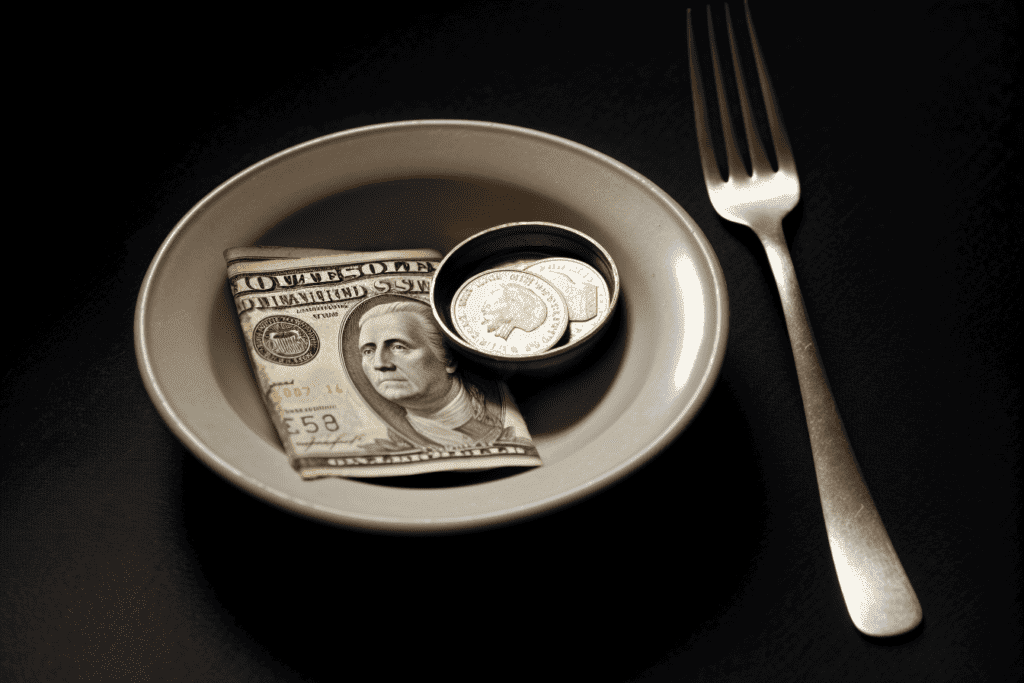
The Water-Diamond Paradox, a cornerstone of economic thought, questions how two goods with vastly different utilities can have such contrasting values. The paradox highlights the conundrum of a diamond, a luxury item with limited practical use, commanding a high price, while water, essential for life, is relatively inexpensive. If utility is the only thing relevant to value, how can we explain this discrepancy?
Diminishing Marginal Utility

Adam Smith, an economist in the 18th century, first proposed this problem and a partial solution. He said that scarcity played the predominant role in dictating the differences in price.1 Water was abundant and diamonds were scarce. This only partially explained this phenomenon. It wasn’t until the 19th century Carl Menger, who many considered the father of Austrian Economics, proposed the concept of diminishing marginal utility.2 Let’s use the example of water to explain this.
Say you’re in a situation where you have no water. A travelling salesman happens to have one fresh glass of water. You know this water will allow you to survive another day. What would you trade in order to get that glass? Probably your whole diamond collection. You make a deal and get the one glass. The salesman offers you a second glass. This next glass will help you survive the next day. It’s worth a lot, but.. the second glass is not as valuable to you as the first one.
This person continues to offer you glasses of water for trade. By the time you get to your 10,000th glass, you’re fairly confident you have enough for your own rehydration requirements for a long time. You start considering using the water for crops to grow or even to wash your car. As you can see, the 10,000th glass of water is much less valuable to you than the 1st.
Menger’s theory of diminishing marginal utility posits that the value of each additional unit of a good decreases as its quantity increases.2 The first unit they obtain has immense value. However, as we acquire more units, each successive unit becomes less valuable since our immediate needs are met, and the utility derived from the additional units decreases. It’s not simply that the water is now less scarce, but because the utility (or usefulness) of each subsequent glass of water changes.
The Dwindling uses for all goods

This diminishing utility occurs for all goods but can occur at different rates. One mobile phone, for instance, will fulfil your need for communication pretty effectively. Having a second phone is not that much more useful. The Third phone is almost useless and would only be used as a backup if the others suddenly broke.
Compared to the individual water units, the mobile phone units approached a value of zero much quicker. This is because there are far fewer uses for a mobile phone than there are for water and those needs are likely to be met much more easily. This also means you’re more likely to give up your last phone as it has less use to you than your first. In our previous articles, we discussed how money is a good just like any other. So could this concept be applied to money?
The answer is yes. Because money has such an immense use, the utility to attain any other good or service, this diminishing marginal utility occurs at a much slower rate.3 For most people, the value of the first dollar is still more valuable than the millionth but is fairly similar. When you approach the tens, hundreds of millions and billions of dollars, this effect is much more noticeable. This means that your affinity (how likely you are to hold on to) your millionth dollar is less than your 999,999th dollar, which is less than your 999,998th dollar etc.
Enduring Relevance

The solution to the Water-Diamond Paradox presents a significant challenge for economists who believe in some objectivity in value. This suggests that not only is the value of a good subjective, but the value of each unit of the same good can also vary for an individual. Furthermore, as an individual, the value of each unit of money is different as well.
Contemporary economics often attempts to analyse market participants as if they were individual atoms. Saifedean Ammous refers to this as “Physics Envy”. However, humans are not atoms; we possess a vast and rich diversity of subjective opinions and valuations. Recognising this diversity of human participants underscores the inefficiency of central planning in regulating economies.4 The free market, with its self-regulating mechanism based on individual preferences, is better equipped to respond to the complex needs of an economy.5 The hubris of governments, financial institutions and politicians to ever think they could effectively manage such an intricate system is misguided at best and dishonest at worst.
Conclusion
For centuries, the Water-Diamond Paradox has intrigued economists and offered valuable insights into the nature of value, scarcity, and choice. Through a deeper understanding of diminishing marginal utility, we can better appreciate the multifaceted forces that influence the prices of goods and services in today’s complex and interconnected world.
References
- Smith A. An inquiry into the nature and causes of the wealth of nations. London: W. Strahan and T. Cadell; 1776.
- Menger C. Principles of economics. Auburn (AL): Ludwig von Mises Institute; 2007.
- Friedman M, Savage LJ. The utility analysis of choices involving risk. Journal of Political Economy. 1948;56(4):279-304.
- Mises, L. V. (1920). Economic Calculation in the Socialist Commonwealth. Auburn, AL: Ludwig von Mises Institute.
- Friedman, M. (1962). Capitalism and Freedom. Chicago, IL: University of Chicago Press.
These articles were designed to make these concepts more palatable. If you’re interested in reading a more in-depth perspective on Austrian Economics (a.k.a. economics), consider the following:
Mises Institute. “Economics for Beginners” https://mises.org/economics-beginners
Amous Saifedean. Saylor Academy “Econ103: Principles of Austrian Economics”, https://learn.saylor.org/course/ECON103
Mises, Ludwig Von. Human Action: A Treatise on Economics. Scholar’s Edition 1998
Friedman M. Price Theory. 2011

Ruki is a passionate Bitcoin educator who firmly believes in the principles of the Austrian School of Economics. As a sound money advocate he recognises its benefits to individuals and society as a whole. He is dedicated to empowering those without financial access to take control and build a more secure future.
